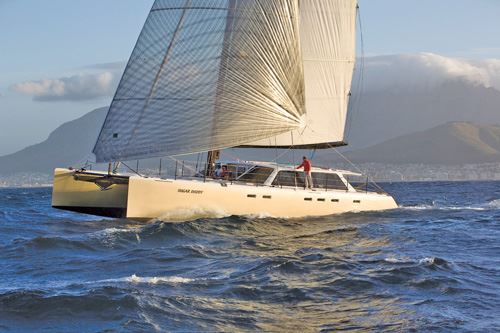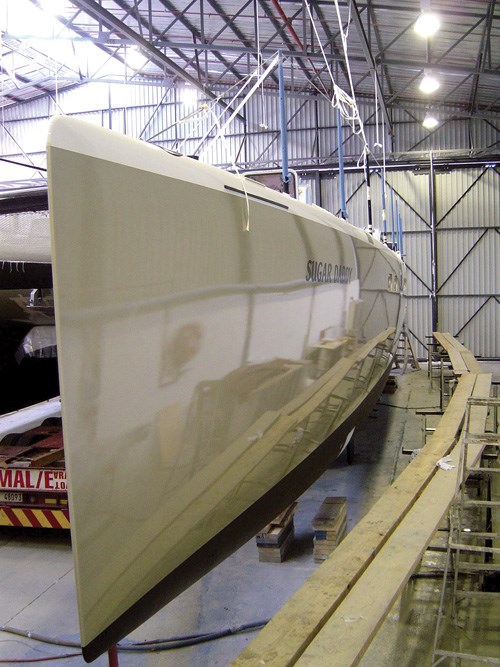Ocean-going catamarans: Making speed on composite hulls
This yacht is one of 13 composite yachts from sailboat builder Gunboat (Cape Town, South Africa) able to comfortably travel 300 nautical miles (345 miles/556 km) per day with a minimal crew.
Sailboat builder Gunboat (Cape Town, South Africa) grew from founder Peter Johnstone’s concept that a high-performance cruising sailboat should be able to comfortably travel 300 nautical miles (345 miles/556 km) per day with a minimal crew. There are 13 Gunboats capable of that kind of speed on the world’s oceans today, including the 66-ft/20.1m Sugar Daddy cruising catamaran (pictured here and on this issue’s cover). Four more are currently under construction.
All are fabricated with composite materials manufactured by SP, the marine business of Gurit UK (Isle of Wight, U.K.), and distributed by AMT Cape Town (Cape Town, South Africa). For the Sugar Daddy, Gunboat employed SP’s Ampreg 22 epoxy laminating system. Trademarked COREcell styrene acrylonitrile (SAN) structural foam was used in selected areas within the hulls, decks, cabintop, bulkheads, engine bases, rudders and dagger boards, while Spabond 340LV adhesive was used for all structural bonding. For the twin hulls, the inside skins — comprising carbon and aramid fiber — were layed up over a composite male tool after wetout in an impregnator. The layup was bagged and vacuum-consolidated, then dry-fitted with the core, according to design and engineering drawings. The core then was bonded to the inside skins with thickened Ampreg resin under vacuum, and sanded to prepare for layup of the outer skins, which were then layed up and vacuum-consolidated over the core. After assembly, the entire composite vessel was postcured in a temporary oven following SP guidelines (65°C/148°F for 16 hours). Afterward, exterior surfaces were faired, primed and topcoated, and then boat components were joined, equipment was installed and the vessel underwent final outfitting.
Because of the size of Sugar Daddy’s components, Gunboat selected SP laminating epoxy for its long working time and choice of five hardeners to accommodate humidity and temperature conditions. Its low viscosity ensured thorough wetout and, Gunboat’s general manager Brendan Rooken-Smith reports, it exhibited low exotherm and excellent air release properties.
Related Content
-
Materials & Processes: Fabrication methods
There are numerous methods for fabricating composite components. Selection of a method for a particular part, therefore, will depend on the materials, the part design and end-use or application. Here's a guide to selection.
-
Scott Bader, Oxeco partner for high-performance bonding solution
Joint technology breaks barriers to bonding lightweight flexible solar panels to roofing structures made from aluminum, coated steel and composites.
-
Epoxy-based structural film adhesive intended for aerospace, MRO
CAMX 2023: Park Aerospace is presenting its new aerospace-grade film adhesive material Aeroadhere FAE-350-1, in addition to other product offerings intended for aerospace, defense and spacecraft.















